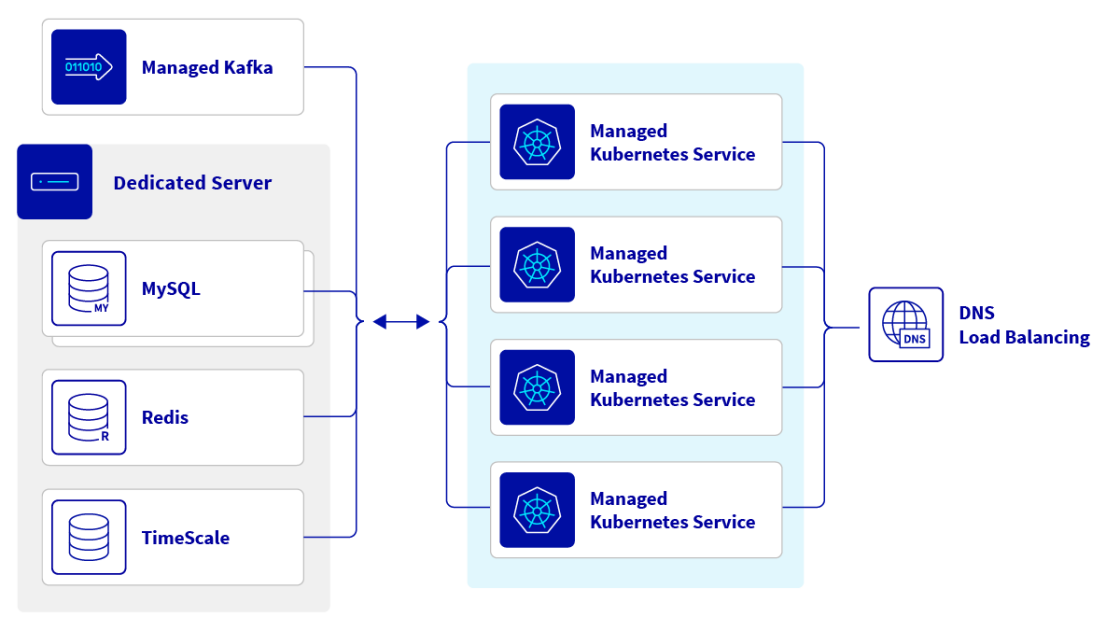Nexx360 enhances programmatic advertising with Kubernetes, placing performance and scalability at the core of its cloud infrastructure
OVHcloud and Nexx360


Ads load 3 times faster than average

Internet bandwidth consumption down by 94% on average

Up to 75% fewer requests and faster response time, with 100% European hosting
The context
Nexx360 is a company specialised in programmatic advertising (digital, targeted, and automated).
Founded in 2020, it provides an innovative solution: Nexx360 Programmatic Cloud, which allows programmatic advertisers to boost revenue without slowing down websites, while shrinking their carbon footprint. Nexx360’s powerful infrastructure facilitates the integration of AdTech partners (advertising technologies), creating a transparent and responsible ecosystem that improves the performance and impact of digital advertising campaigns.
Designed for publishers, the Nexx360 Advertising Marketplace stands out for its transparency and efficiency, offering partners faster ad loading speeds and a reduced environmental footprint.
The challenge
To guarantee peak performance, Nexx360’s services must respond to requests in sub-milliseconds, no matter the platform load.
As a result, low latency is critical when designing and deploying infrastructure, especially through the use of high-performance servers and virtual machines.
Optimising code for minimal CPU usage is another significant hurdle. The goal is to process a maximum number of requests per second, thus creating a solution that can scale to handle a high volume of concurrent clients.
“The launch of Public Cloud C3 (Compute Optimized) instances has been a game-changer.”
Gabriel Chicoye, Founder and CTO, Nexx360
The solution

The architecture shown above is built for peak performance and easy scaling. Opting for Kubernetes was, therefore, an obvious choice.
Upstream, a DNS distribution system routes each request to the nearest infrastructure based on location. For instance, a request from North America is sent to a cluster located in Beauharnois, Canada, while requests from Europe are processed by a cluster within Europe. Customisable and accurate weighting rules then distribute the load between the different clusters.
Because the infrastructure is stateless, managed databases are used to supplement physical server-hosted databases, and are internally managed.
The Kubernetes architecture allows for automatic horizontal scaling. Nodes can be dynamically added within clusters, up to the limits set by the node pool configuration.
Finally, built-in caching mechanisms help improve performance by temporarily storing query results, including large or complex ones, in memory.
“Adding more caching servers has tripled overall performance.”
Gabriel Chicoye, Founder and CTO, Nexx360
The result
By adopting Kubernetes and relying on its APIs, Nexx360 was able to meet its sizing and production scaling needs, while maintaining platform resilience.
The company’s use of internal automation tools, scripts, and Kubernetes APIs allowed it to seamlessly deploy applications with zero service interruptions for end users. All of this without relying on a specific cloud provider.
“Kubernetes has enabled us to standardise our multi-provider infrastructure, which now makes managing deployments and updates effortless.”
Gabriel Chicoye, Founder and CTO, Nexx360
With its automated and interoperable features, Kubernetes greatly simplifies the creation of new clusters. Depending on the cloud provider, setup—from initial access to full configuration—can be completed in minutes.
Each cluster is based on a node pool, designed for scalability. To maintain stability, a minimum of fixed nodes is used, while a set limit (e.g., 10 or 15 nodes) enables automatic scaling to adjust for fluctuating demand.
Since the clusters are spread across various geographical locations, the platform is more resilient to failures. Should a cluster be unavailable or require maintenance, traffic will automatically reroute to another via pre-configured DNS routing rules.
Nexx360’s Kubernetes deployment exemplifies a successful transition to a modern architecture, yielding benefits such as controlled scalability, cross-environment interoperability, and optimised resource allocation.